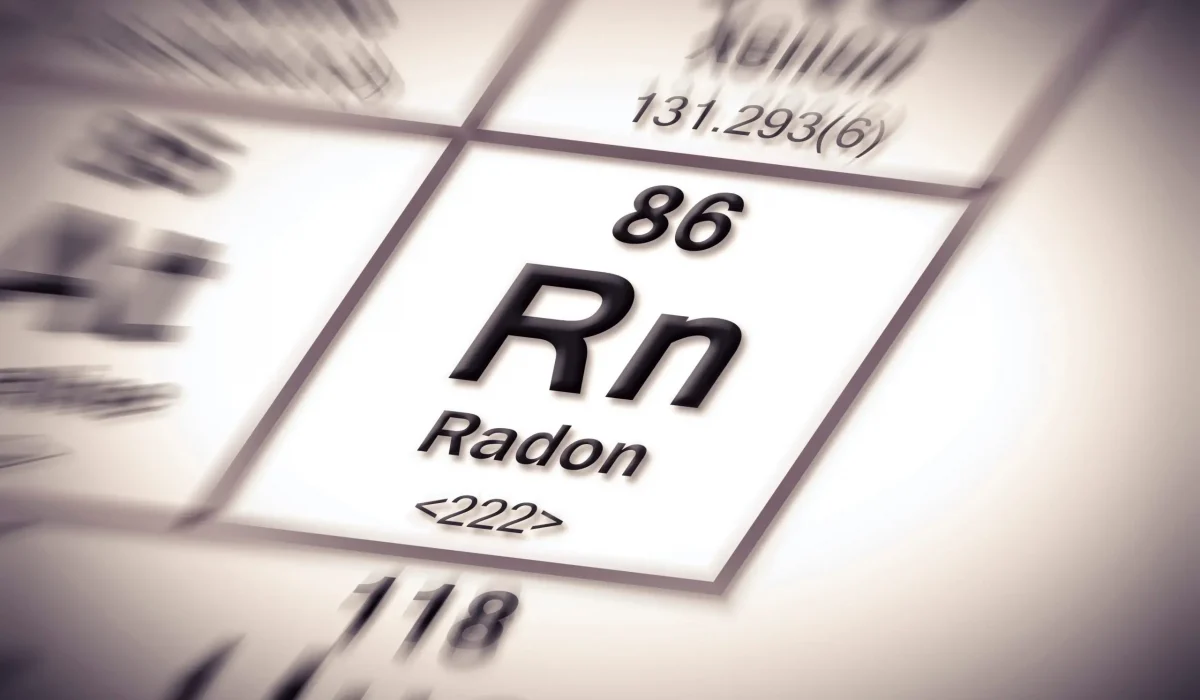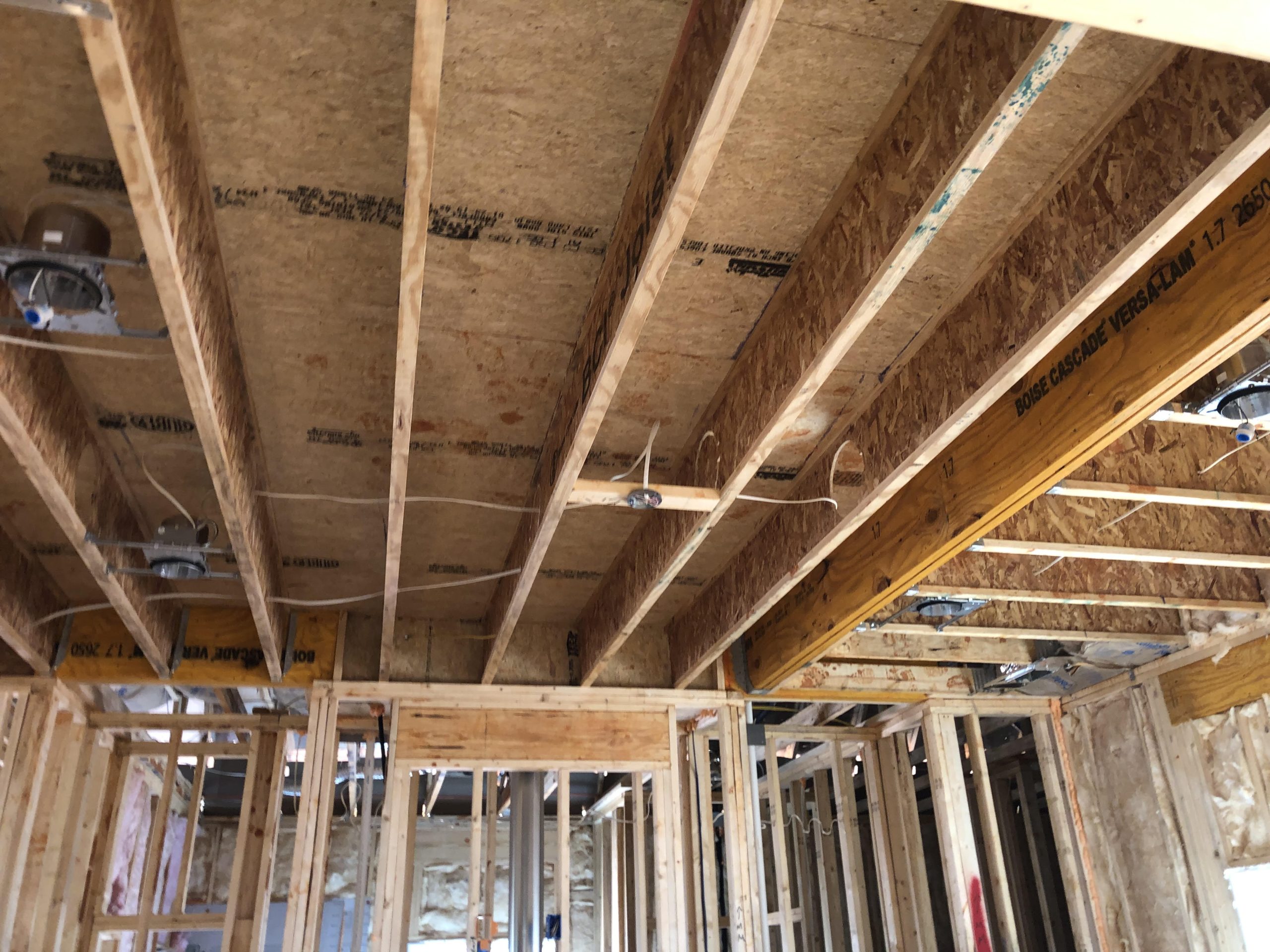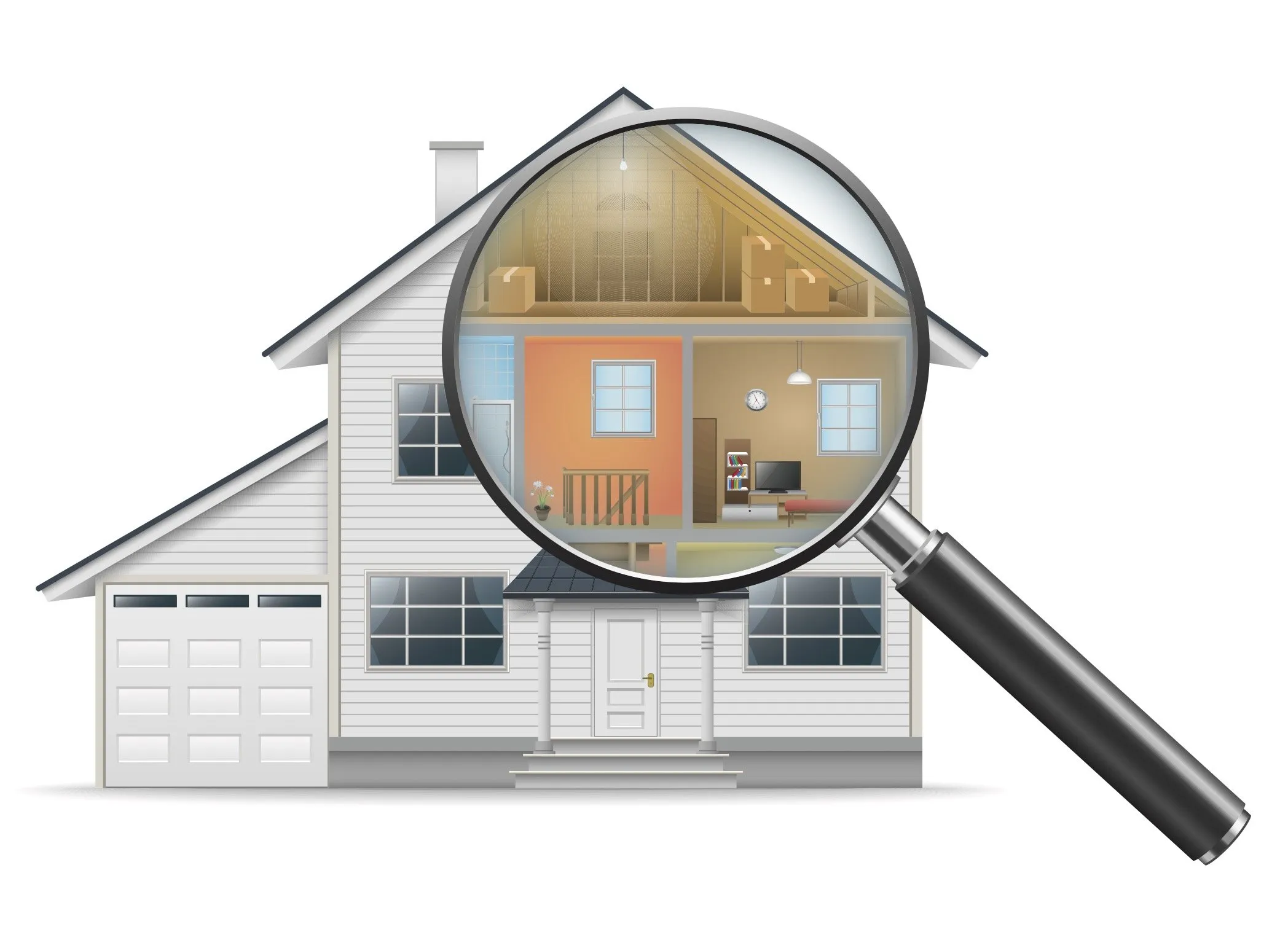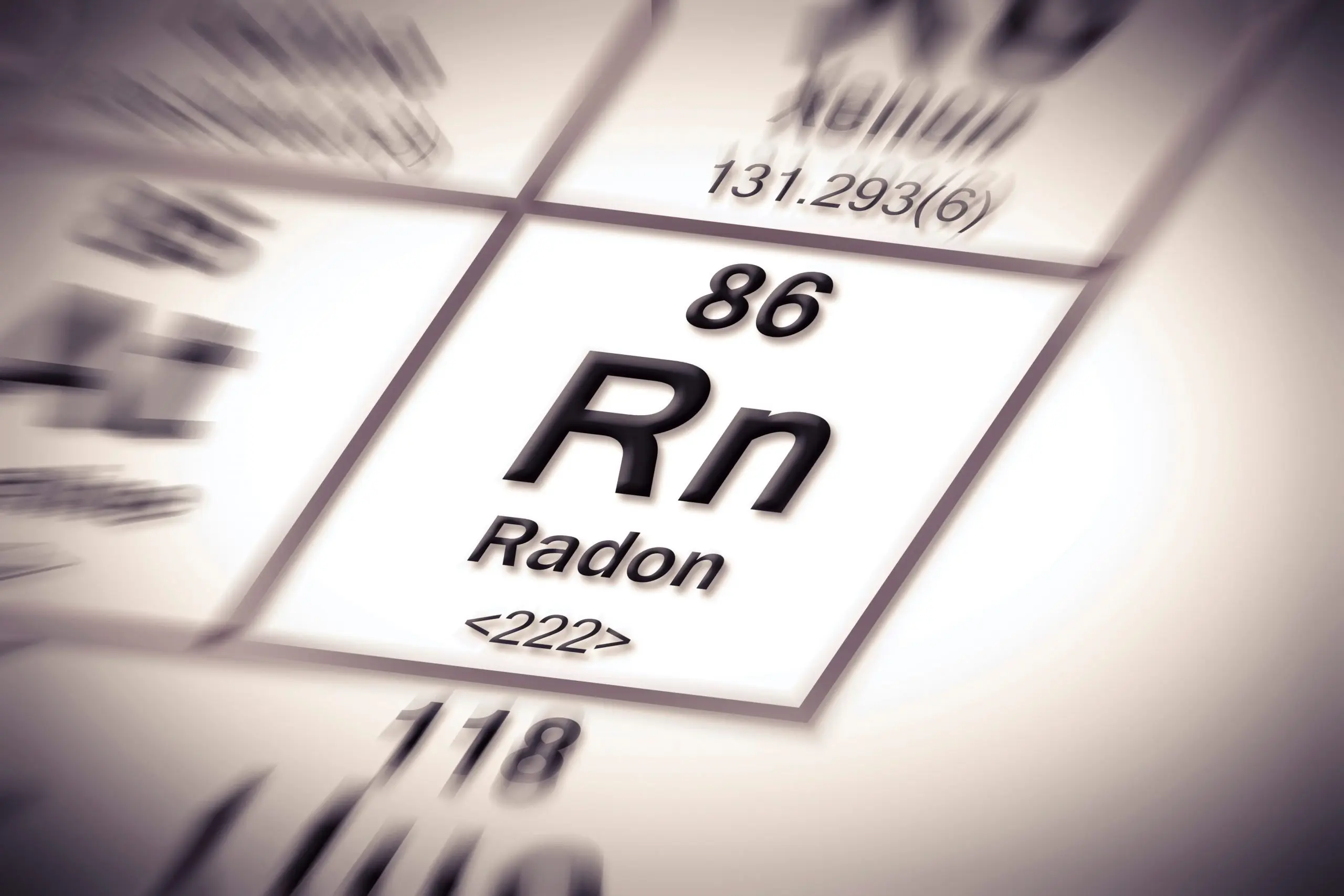You may be surprised to learn that millions of Americans are at risk for radon gas exposure. You may not even know what radon is or why it’s dangerous. If that describes you, please keep reading. You will not only learn what radon gas is but also why testing for radon gas is necessary, regardless of your location.
What is Radon Gas?
Radon is a radioactive gas that is naturally occurring. The gas is produced from the radioactive decay of uranium that is in the soil and rock underneath us. Radon gas is colorless, odorless, and tasteless; therefore it cannot be detected in indoor air by human senses.
Where Does Radon Come From?
Radon gas is created due to the natural decay of uranium, which is found in soil and rock and some building materials. This process happens naturally, but it can be increased by human activities such as mining or excavation. This gas can be drawn into your house due to the differences in air pressure. The gas makes its way into the home through cracks and openings. Radon concentration over extended periods, can be detrimental to the occupant’s health. The Surgeon General warns that radon is the second leading cause of lung cancer in the United States. It is estimated it is responsible for 21,000 lung cancer deaths in the US every year. Smoking remains the leading cause of lung cancer, but smoking in the presence of radon can increase the risk of cancer.
Radon Exposure and Lung Cancer
Behind tobacco smoke, radon gas is the second leading cause of lung cancer in the United States, accounting for an estimated 21,000 deaths per year. Studies have shown that you are more likely to develop lung cancer if you are exposed to high concentrations of radon gas over a long period of time (several years or more). The risk of developing lung cancer is greater for those who smoke, as smoking combined with radon exposure increases your risk of developing lung cancer even further.
Where Are Radon Concentrations Found?
Radon gas can be found in all 50 states, but is more prevalent in certain areas. The Environmental Protection Agency (EPA) has published an interactive map that displays the radon zones around the United States. While homes in any area are susceptible, homes in zone 1 are at increased risk. Radon is found naturally outdoors at an average 0.4 pCi/L. In comparison, the average indoor level is 1.3 pCi/L and the EPA strongly recommends action when indoor levels are above 4.0 pCi/L.
Radon gas is most heavily concentrated in the lower levels of your home, but elevated radon levels can be detected on upper levels as well. Since radon is pulled into your home through cracks in the foundation or exposed soil in the crawlspace, the areas closest to the soil will contain the highest radon levels. Many people believe that homes without a basement are at lower risk. This is not the case. While a well built home may have mitigation naturally built in, all homes can be at risk. This risk of radon exposure can be higher in certain homes based on the soil conditions underneath the home. Homes with high radon levels may be just up the street or in the same neighborhood with homes with low radon levels. Without testing, you don’t know.
How to Test for Radon
Testing for radon is relatively easy. You can test for indoor radon yourself or you can hire a testing professional. Each method can have some pros and cons. We will cover each.
Self Testing
Radon test kits can be purchased at your local home improvement stores. You may have seen them near the home safety equipment such as smoke and carbon monoxide detectors. First Alert Test Kits are charcoal activated sample kits that can be used to place in your home for at least 48 hours. These are often referred to as passive radon detection kits. Once a radon test kit has been exposed for at least 48 hours, it should be placed in a protective envelope and sent back to the lab for analysis. While each box only contains one test kit, it is recommended that you put out two tests side by side (follow stated directions). This will give you confidence in test data provided by the lab. Including sampling time, it will take about 4-5 days to get your test results.
Care must be taken in how and where samples are placed. Improper placement or home conditions can cause test inaccuracy. Due to the nature of charcoal sampling, shipping and testing, there can be some inherent error. If you decide to go this route, please carefully follow all of the instructions. If you want a trained professional, with professional testing equipment, that is definitely an option.
Note- Granite countertops are one of the building materials that can emit small amounts of radon gas, but enough to impact the accuracy of a test. Do not place samples on or near granite countertops.
Professional Testing
Professional indoor radon testing can be found across the country. Home Inspection companies may offer this testing as a service as well as radon mitigation companies. In both cases, always ask for their qualifications and ensure that it meets your states’ requirements or laws. Professional testing often involves a testing device that is placed in the home. These devices are referred to as active testing devices and require power. While they are still placed for a minimum of 48 hours, which is considered a short term test, these devices report hourly indoor radon values as well as overall averages. Continuous active monitors, or a long term test, can also be placed if the levels of radon need to be monitored over time. The cost of these tests are generally more expensive, but you are paying for the inspector’s time, travel, expertise, test equipment and insurance coverage. You are also getting a higher level of accuracy and the assurance that comes with a professional radon test result.
I have My Radon Results, Now What?
Your results are in hand… If the results are below 2 pCi/L, it is recommended that you just consider bi-annual testing or testing when the home structure or systems have changed. If your results are between 2 and 4 pCi/L you should consider retesting as radon levels in your home can vary seasonally or due to weather conditions. You may also want to consider mitigation, especially if your results are closer to 4 pCi/L. What if your radon levels are above 4 pCi/L? Relax, your home is not condemned. There are options if you have elevated levels of radon gas.
Mitigation
Now that you have your results, you should discuss them with your testing professional to determine if there were any radon mitigation systems already installed. A vapor barrier that has been moved, a radon vent that is uncovered or an inoperable fan could have a detrimental effect on your testing results. If there were issues found with the current mitigation system, then have those corrected and re-test. You should wait at least 24 hours after the systems are functional and then have your home retested. If your test results are still above 4 pCi/L or if your home did not have any mitigation efforts installed prior to testing, you should consider your mitigation options.
The most common type of mitigation on a slab or basement is a form of soil suction. There are several methods for the soil suction mitigation technique. A mitigation professional will evaluate and determine the best technique to use based on your home construction and conditions. For homes built on crawlspaces, a plastic sheet (sometimes referred to as the vapor barrier), a vent pipe and fan are used to draw the radon concentrations into the vent and to the outdoors. Passive or active crawlspace ventilation can also be used to vent the crawlspace, which can lower radon levels in the home as well. There are also sealing and pressurization methods that can be employed in certain situations.
If all of these things sound like more than a weekend DIY project, you’re right. With your family’s health on the line, always hire a professional radon mitigation firm to do the work. Don’t always go with the cheapest solution. Call around, ask for client reviews and ensure that retesting to confirm the work is included.
Final Thoughts
Radon exposure is a deadly, silent killer. Knowing about its existence is a good start, but understanding that it can be impacting your home is critical. Testing for radon is not difficult or all that expensive, but knowing you have high levels of radon can be a literal life saver. You don’t have to look at your home as a death trap if you have the proper mitigation methods employed. That is the good news! With proper mitigation, you can return your home back to radon levels that are safe for you and your family. So now that you know all about radon, its impact on your health, how to test for it and how to fix it, don’t you think testing for radon is necessary?
Frequently Asked Questions
What is the main cause of radon problems?
The main cause of radon problems is the natural radioactive decay of uranium in soils and rocks. This creates a radioactive gas that can be found in the indoor air of some homes, which if inhaled over time, could have harmful health effects.
Does testing for radon require a professional?
Yes, it is highly recommended to use a certified professional to test for radon gas. Professional testing will be more accurate and reliable than DIY testing kits, which may not provide a clear picture of the levels of radon present in the indoor air of your home.
Is it necessary to have my home tested for radon?
Yes, it is important to have your home tested for elevated radon levels if you are concerned about potential health risks, specifically the risk of lung cancer. Conducting a radon test can help determine if you need to take steps to reduce the levels of radon in your home. The only way to know for sure if your home has high concentrations of radon is to have it tested by a qualified radon technician. Radon testing is relatively inexpensive and easy to do. Depending on the type of test used, results can be available within a few days or weeks. With some tests, you can even get immediate results.
How often should I test for radon?
It is recommended to test for radon every two years, or after any major changes in your home. Testing more often than this may be necessary if you have a high baseline level of radon present. If you have tested and found that the levels are above 4 pCi/L (picocuries per liter), it is important to take immediate action to reduce the radon levels in your home.
Where does radon come from in a home?
Radon can enter buildings from the soil, from water supplies and certain building materials can emit radon. It is important to know that most of the radon concentrations found in a home typically comes from the soil. Therefore, proper mitigation techniques should be employed to reduce levels if they are above acceptable limits.
What part of the country is radon most commonly found?
Radon gas can be found in all parts of the country, but it is most commonly found in areas where uranium-rich rocks and soil exist. These regions include the Appalachian Mountains region, the Midwest, and parts of New England. It is important to test your home regardless of where you live because radon may still be present even if you do not live in these higher risk areas.
Where there is radon, it is most commonly found in the indoor air of the lower levels of a home, such as basements and crawl spaces. However, it can also be found in other areas, such as upper levels of a home or even outdoors. Therefore, testing should be done throughout the entire home to ensure radon levels are safe.
What type of soil has the most radon?
Soil that is high in uranium has the highest levels of radon. This type of soil is typically found in areas with granite or shale bedrock, or soils naturally enriched with uranium deposits. Testing your home and its surrounding soil can help determine if you have a radon problem.
Does radon gas cause lung cancer?
Yes, prolonged radon exposure can increase the risk of lung cancer. The Environmental Protection Agency (EPA) estimates that 21,000 deaths per year are caused by radon-induced lung cancer in the United States.
The risk of developing lung cancer from radon gas exposure increases the longer you are exposed and the higher the levels of radon present in your home. The EPA estimates that your lifetime risk of lung cancer is around one out of every 15 homes that have indoor radon levels above 4 pCi/L.
Cigarette smoking can cause an increased risk of lung cancer from radon exposure.
How can I reduce radon?
There are several measures you can take to reduce radon in your home. Some of these techniques include sealing cracks, improving ventilation and installing an active soil depressurization system that uses a fan to draw air from beneath the foundation and vent it outdoors. Sealing any openings or cracks in the floors and walls, as well as installing a passive radon barrier can also help to reduce radon. If the levels of radon in your home are above 4 pCi/L, you should contact a qualified radon mitigation contractor to assess the problem and discuss options for reducing the indoor air concentrations.






